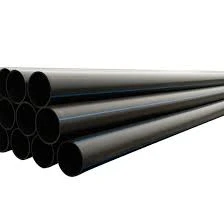Dek . 18, 2024 14:01 Back to list
ppr cold water pipe
Understanding PPR Cold Water Pipes A Comprehensive Guide
When it comes to plumbing systems, selecting the right materials is crucial for ensuring efficiency, safety, and durability. One option that has gained popularity in recent years is Polypropylene Random Copolymer (PPR) piping, particularly for cold water distribution. This article delves into the characteristics, advantages, installation methods, and applications of PPR cold water pipes, providing you with a comprehensive understanding of why they are a reliable choice for plumbing needs.
What is PPR?
PPR, or Polypropylene Random Copolymer, is a thermoplastic polymer that is widely used in the production of pipes and fittings. Notably resistant to corrosion, scaling, and biological growth, PPR pipes can withstand varying temperatures and pressures, making them well-suited for cold water applications. The random copolymer composition of PPR, which includes the incorporation of ethylene, improves its strength and flexibility compared to standard polypropylene, making it a preferred choice for many modern plumbing systems.
Advantages of PPR Cold Water Pipes
1. Durability and Longevity PPR pipes have an impressive lifespan, often exceeding 50 years when installed correctly. They are resistant to chemicals, ensuring that the water remains uncontaminated.
3. Lightweight The lightweight nature of PPR makes it easier to handle and install compared to traditional materials like metal or PVC. This can lead to lower labor costs and faster installation times.
4. Low Thermal Conductivity PPR's low thermal conductivity means that it does not easily lose heat, making it energy-efficient for transporting water temperatures that might need to be preserved, although it is primarily designed for cold use.
5. Cost-Effectiveness PPR pipes are generally more affordable than other pipe materials, both in terms of purchase price and long-term maintenance costs. Their resistance to corrosion and scale buildup reduces the need for frequent replacements and repairs.
6. Eco-Friendly PPR is a recyclable material, contributing to environmental sustainability. Its production also tends to consume less energy and resources compared to some alternative materials.
ppr cold water pipe

Installation of PPR Cold Water Pipes
The installation of PPR pipes follows specific procedures to ensure efficiency and reliability. It typically involves the following steps
1. Planning Before installation, a detailed plan should be made, outlining the layout, dimensions, and requirements of the system.
2. Cutting PPR pipes are cut to the desired lengths using a suitable pipe cutter for a clean and precise fit. It is essential to deburr the cut ends to ensure smooth connections.
3. Joining PPR pipes are commonly joined using a method called fusion welding. This involves heating both the pipe and the fitting until they soften and then pressing them together to create a strong bond. This process ensures a seamless connection that is as strong as the pipe itself.
4. Testing After installation, the system should be thoroughly tested for leaks and pressure resistance before being put into service.
Applications of PPR Cold Water Pipes
PPR cold water pipes have a wide range of applications. They are commonly used in
- Residential Plumbing For delivering cold water to fixtures such as sinks, showers, and bathrooms. - Commercial Buildings In offices, schools, and hospitals where efficient cold water supply is critical. - Industrial Plants For transporting potable water and in cooling systems. - Irrigation Systems PPR is also used in agricultural applications for its resistance to chemicals and corrosion.
Conclusion
PPR cold water pipes offer an excellent solution for modern plumbing needs, combining durability, cost-effectiveness, and ease of installation. Their wide range of benefits makes them a popular choice for both residential and commercial applications. As more industries aim for sustainability and efficiency, PPR continues to stand out as a reliable option, ensuring that cold water distribution systems remain efficient and long-lasting. By understanding the advantages and characteristics of PPR pipes, you can make an informed decision for your plumbing projects, ensuring a safe and effective water supply for years to come.
-
Durable Glossy PVC Rigid Sheet | Premium High-Shine Panels
NewsAug.26,2025
-
Durable PP Rigid Sheet: Lightweight, Chemical Resistant Solutions
NewsAug.21,2025
-
PVC Grey Sheet for Extraction: Chemical Resistant & Durable
NewsAug.19,2025
-
Durable PVC Pipe Fittings for Plumbing & Irrigation Needs
NewsAug.18,2025
-
HDPE Steel Belt Reinforced Spiral Corrugated Pipe | High Strength
NewsAug.17,2025
-
HDPE Pipe Fittings: Durable, Leak-Proof Solutions
NewsAug.16,2025

